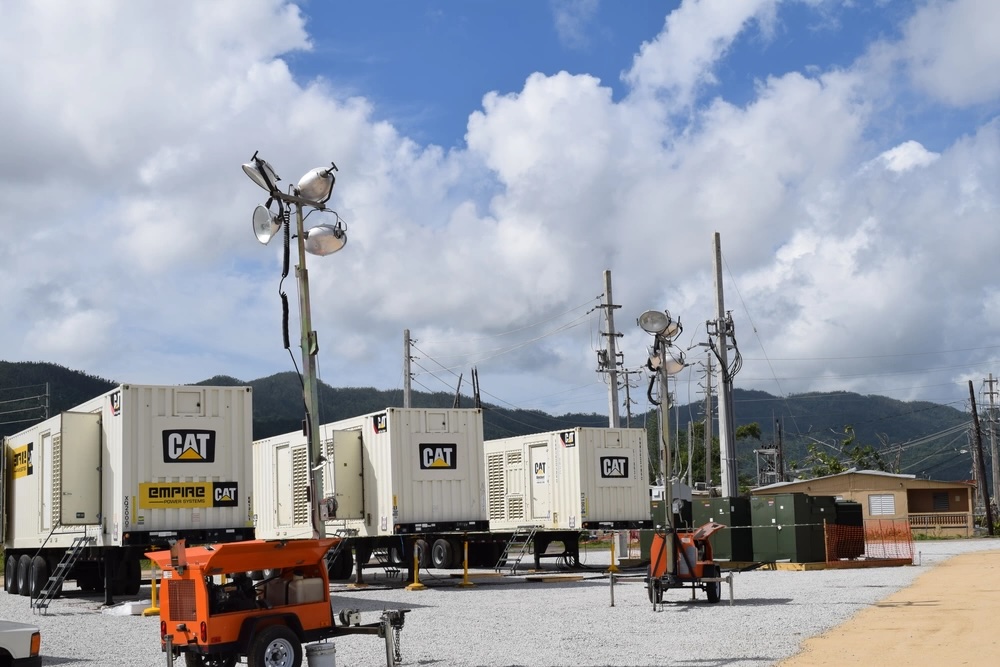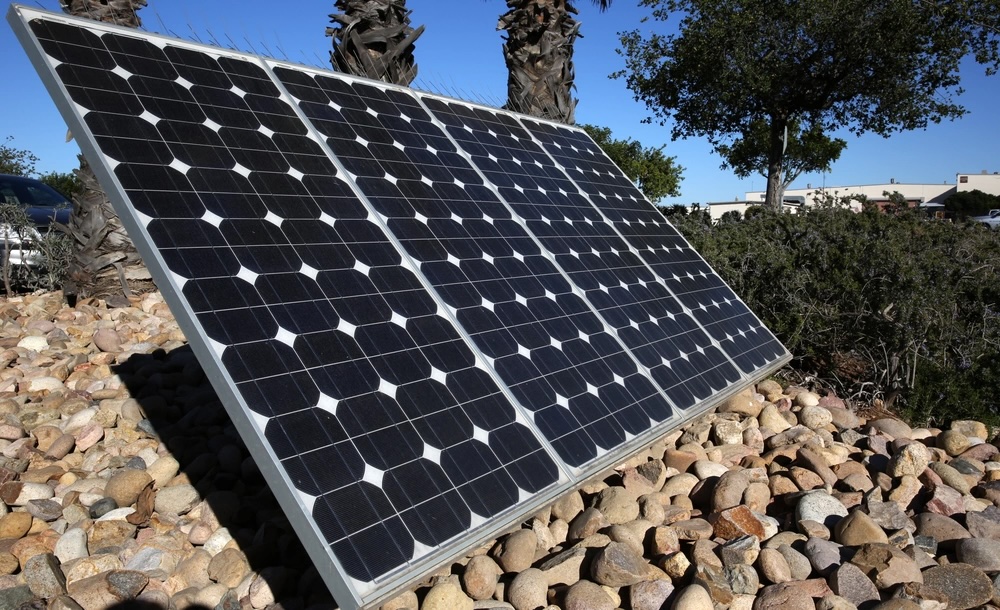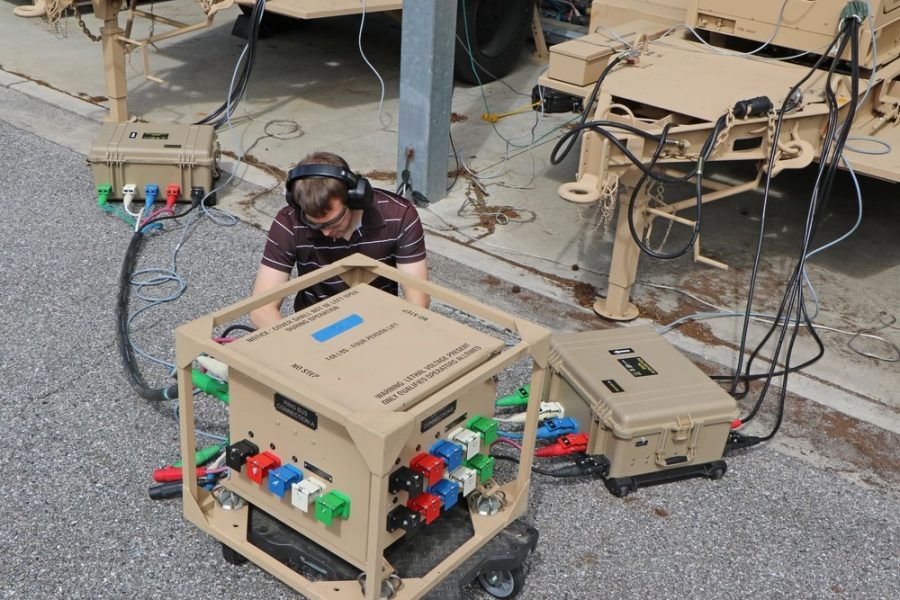A new paper written by an Air Force engineer warns of a major vulnerability on U.S. military bases overseas: their power infrastructure. Most bases are wired into the electrical grids of their host nations, but if that grid fails due to a natural disaster or is destroyed by an adversary, the backup generators on base may not have enough fuel to last more than a week.
“The generators will have to operate for however long the outage is,” Lt. Col. Nathan Olsen, special assistant to the executive director of systems engineering and architecture in the Office of the Undersecretary of Defense for Research and Engineering, told Air & Space Forces Magazine.
“If we’re in a contested environment, that means we would have to send technicians out to maintain them, we would have to send fuel to keep them running,” he said, pointing to the example of hospital generators in Gaza running out of fuel due to the Israeli blockade there.
“The military would be in a similar problem, unless they get fuel to the generators and get them operating or get the host nation power back up and running,” he said.
But the military may be able to avoid that problem if it builds more robust power grids at its overseas bases. These ‘microgrids’ could draw power from a range of renewable and nonrenewable sources in order to sustain long-term operations.
“They would almost be like a mini-city, operating their own power plants without the help of the host nation,” Olsen said.

Gridlock
In an article published in the Fall issue of Air University’s Air & Space Operations Review, Olsen pointed out how Russia targeted Ukraine’s infrastructure, causing electricity, heat, and hot water shortages across the country in 2022. Beyond that, Russia also reduced the flow of natural gas to Europe, where several U.S. military bases are located, causing a spike in natural gas prices. Natural disasters, climate change, and cyber disruptions can have a similar effect on a host nation’s power grids, which could be an Achilles’ heel for U.S. bases abroad.
“Undoubtedly, U.S. overseas bases are in a situation where they are predominantly dependent on host-nation and local energy supplies,” Olsen wrote. “Diversifying energy sources and moving toward a localized, U.S.-run energy source—a microgrid—would lessen this vulnerability and increase overall reliability and resiliency.”
A microgrid, he explained, is a localized group of electricity generators that can operate independently of the host nation’s electrical grid. Several features of microgrids make them more resilient to disruption than a group of backup generators. The first is a storage system: batteries that allow bases to retain energy. The second is a central controller, a monitoring system that coordinates the microgrid’s power sources and balances and controls electrical loads, Olsen said.
“In a microgrid with storage, commercial off-the-shelf charge controllers link all power sources and smartly combine them to meet user demand,” he wrote. “If the renewable power source is not meeting demand, the control system draws from the battery storage or from another power generator.”
Having a variety of sources from which to draw power is the third element that could give microgrids an edge over existing systems. A base dependent on fossil fuels to power its backup generators may be paralyzed by a fuel shortage, but a base that uses solar panels, wind turbines, biomass, nuclear microreactors, and/or fossil fuel-powered generators could keep running even if one source was offline.
Energy technology is rapidly advancing, with innovations like new batteries that store energy for longer and solar panels that continue generating power in snowy, overcast conditions. Nuclear microreactors are another promising technology—one the size of a standard shipping container could likely power an entire base, Olsen wrote, and a pilot program at Eielson Air Force Base, Alaska seeks to bring one online in 2027.
“That’s the great thing about this—there is a lot of new technology that is increasing the possibilities to generate power without relying specifically on fossil fuels,” he said.

Charging Up
Microgrids are being installed at places like Yokota Air Base, Japan; Tyndall Air Force Base, Fla.; and Marine Corps Air Station Miramar, Calif., which claims it can operate for up to 21 days off a mixture of renewable and nonrenewable energy sources. Still, Olsen said the military needs to be more aggressive pursuing microgrids to be prepared for future conflicts or natural disasters.
“Although the Department of Defense recognizes the importance of reliable power, it is not implementing innovative solutions like microgrids quick enough,” he wrote. “Congress can help increase energy security and reliability in the military by mandating microgrids at overseas bases and providing funding to enact this mandate.”
The Army is setting an example for the rest of the services when it comes to microgrids, Olsen said. Its garrison on Kwajalein Island, which is just 3.5 miles long and a quarter-mile wide, has a microgrid of generators and solar panels that operate independently of the rest of the island’s grid. The service plans to set up a microgrid at every installation by 2035 and develop enough renewable energy and battery storage to make its critical missions self-sustaining by 2040.
Direction and funding from Congress could push the other branches to adopt similar plans, said Olsen, who cited Gen. David Petraeus’ 2011 quote that “energy is the lifeblood of our warfighting capabilities.”
“Our dependence on power and technology has only increased,” Olsen said. “I think being able to provide that secure power will get rid of a potential vulnerability, help us prevent conflict and help our allies and partners in the future.”
